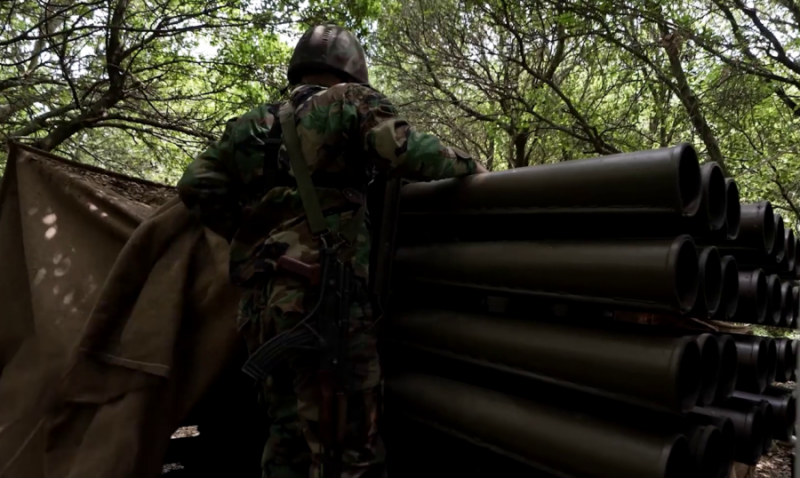The British newspaper "Times" described the assassination operation of Ismail Haniyeh in Tehran as remarkably precise, based on intelligence information, showcasing Iran's failure to protect him. It added that Israelis are challenging Iran to respond to Haniyeh's assassination, which will certainly happen within days, leading Israel to initiate a war following this expected response, according to "Asharq Al-Awsat."
Iran informed the United Nations on Friday that Hezbollah would respond to Israel after the killing of prominent leader Fouad Shuqr in a bombing that targeted a building in southern Beirut. Iran indicated that the response would not be limited to military targets.
Western countries, according to the newspaper, believe that neither Israel nor Iran desires a full-scale war. They think Iran will activate its proxies, such as Hamas and the Houthi group in Yemen, to fight in support of Lebanese Hezbollah but will abandon any of them to avoid entering a direct war with Israel.
In response to an attack on its consulate in April, Iran launched around 350 missiles and drones at Israel but achieved only minimal impact. The "Times" noted a growing concern, especially in Washington, that Israeli Prime Minister Benjamin Netanyahu's political survival instinct, along with his far-right government partners, pushes towards an attack on Lebanese Hezbollah, rationalizing that Hamas is no longer their top security concern, nor is Gaza, which suffers from a population exceeding two million Palestinians. Instead, they view Hezbollah in Lebanon as the main threat and how Tehran uses it in an open war against Israel.
The Israeli army has long incorporated a strategic plan to force Iran to choose between withdrawing or being confronted (Iran and its proxies). Many military personnel in Israel believe that following the October 7 attack, it is time to implement this strategy. No army in the world wants to fight on multiple fronts, and the Israeli army faces a semicircle of enemies challenging its air defense, from Lebanon to Syria, Iraq, Iran, and Yemen.
The situation in the West Bank is approaching a boiling point, while the war in Gaza has turned into a counter-insurgency; the Israeli army relies on airstrikes and limited ground operations without any realistic plan for the day after war. The Israeli army is currently following a plan to reduce the number of its forces on the ground in Gaza to make them available for operations in the north.
### What Would the Lebanon War of 2024 Look Like?
The newspaper confirms that if the Israeli army plans to open a new front in Lebanon, it certainly will not resemble previous wars in 1978, 1982, and 2006, where the Israeli army achieved victories that resolved some of its security problems. The "Times" notes that Hezbollah is undoubtedly stronger than it was 20 years ago. After years of strong Iranian support, it is estimated that they possess about 150,000 missiles, compared to the ten thousand missiles held by Hamas, plus drones and artillery systems. Hezbollah may confront Israel with approximately half a million weapons.
Hezbollah has a network of tunnels larger than those built by Hamas in Gaza, spread throughout southern Lebanon and along the Lebanese-Syrian border, including deep shelters, as well as firing positions resembling beehives in the area south of the Litani River, extending to Israel's northern border.
While Hamas fights in a guerrilla warfare style, Hezbollah fighters train as a regular army. According to an assessment mentioned by the newspaper, Hezbollah has about 50,000 trained fighters, more than double the number of fighters in Hamas.
Israel's previous wars in Lebanon focused on clearing the area south of the Litani River and establishing a buffer zone, then maintaining it in one way or another. The "Times" believes that this objective, to clear the south down to the Litani River, will be the hardest achieved this time and hardly attainable. Hezbollah possesses what resembles a low-cost nuclear deterrent against Israel through thousands of long-range missiles.
The article continues: If Hezbollah launches these missiles in large volleys, it will overwhelm Israeli air defenses and destroy civilian centers and infrastructure in northern Israel, reaching Haifa and Tel Aviv. It states that Israelis cannot live under this threat, leading them to execute a series of rapid offensive operations inside Lebanon to attempt to destroy missile launch platforms, weapons caches, and tunnel networks. If Israel cannot achieve its goals, it will launch an intense air campaign to neutralize the missile threat. Should the air campaign succeed in achieving only half of its objectives, Hezbollah could launch half of its remaining missile stockpile.
The newspaper estimates that if the Israeli army finds itself stuck fighting in the mountainous region of Lebanon or bombing distant targets in the north with minimal strategic impact, or fiercely battling within Syrian borders where Hezbollah elements hide, the war would have turned into a war of attrition. With the continuing threat from the north, Hamas attacks in Gaza and the West Bank, as well as attacks from the Houthi group in Yemen, would renew.
The Israeli army started to withdraw its units from Gaza to rearm itself, alongside rebuilding its ammunition stockpile and increasing the mobilization of reservists, preparing around 60,000 northern residents who have been displaced since the war began to stay away from their homes longer. This indicates that the Israeli army intends to shift its military operations from Gaza to Lebanon.
According to the newspaper's assessment, these measures might be aimed at intimidating Hezbollah out of entering a war, causing them to halt daily operations along the border. The article concludes: Netanyahu previously stated that every Hamas leader is a "dead man", and Israel is indeed seizing every opportunity to prove this saying even in the heart of Tehran, which is dangerous, and in the end, we will know whether Tel Aviv was correct in assuming that Tehran would fear or not, according to "Asharq Al-Awsat".




